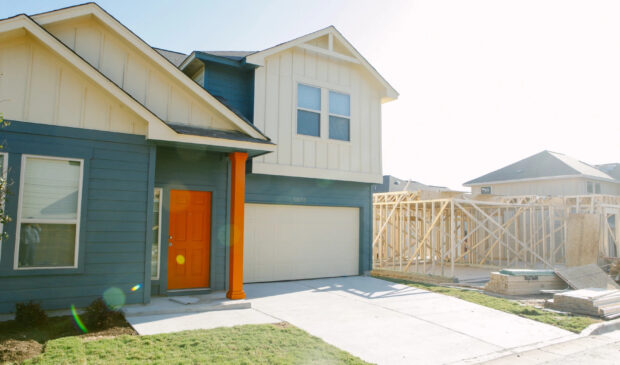The size of land Austinites need to build a home on is about to get smaller – as part of an effort to encourage developers to build smaller and cheaper houses.
City Council on Thursday approved a resolution that will start the process. The initiative would reduce the size of land required to build a home, or what is referred to in the land code as minimum lot size, by more than half.
Land codes dictate what and where you can build and how high and wide a structure can be.
Austin’s land code has for a long time required one home be built on land that is at least 5,750 square feet. Thursday’s vote reduces that minimum to 2,500 square feet and allows up to three units per lot.
Council Member Leslie Pool, who represents parts of North Austin, spearheaded the move and said the change is an opportunity to diversify home-buying options for middle-income families.
“I’m optimistic we can achieve the goals of this initiative with a strong commitment to public discussion and engagement,” Pool said. “Together we will tackle the challenges middle-income families face and deliver true benefits to those looking to buy a home and stay in Austin, as well as those who continue to work to stay.”
Real estate experts have said reducing the size of land and the size of a home helps reduce the cost, making it more attainable for people who would not otherwise be able to buy a home. The Mueller area is often pointed to as a success story for diverse housing options.
Several of the city’s affordable housing programs are geared toward families earning lower-income salaries, but many residents in Austin who don’t qualify for these programs also can’t afford a home. The median home sale price for June was nearly $600,000.
Community members and housing organizations, such as HousingWorks, the Austin Board of Realtors and the Austin EMS Association, expressed support for reducing the minimum lot size.
Awais Azhar, an advocacy board member for HousingWorks, said the group endorsed the resolution and highlighted its ability to increase access to housing for more people.
“Moderate income groups don’t have those opportunities right now,” Azhar said. “It has become increasingly important that we open up more options in our housing market because it is much harder for people to own homes here, when they could purchase homes in the past or in a different market. This helps fill that gap.”
Several local organizations also said the measure would help with recruitment and retention, because people are able to live close to where they work.
While most of the Council members, including Mayor Kirk Watson, supported the change, Council members Alison Alter and Mackenzie Kelly opposed it.
Several residents joined in opposition, saying it would not address affordability and would change the character of their neighborhoods, push people of color and elderly residents out of their neighborhoods, and put a strain on drainage and other public infrastructure.
“This is a gentrification provision,” Julia Woods said during public comments Thursday. “It’s a boondoggle that developers keep pushing as a proposal to increase affordable housing when that is exactly what it is not going to do. Developers should be able to make money without these kinds of provisions … because there is a lot of money being made in Austin, and they can do it just fine with laws the way they are.”
The flight of people of color to the suburbs, where it’s more affordable to live, has been going on for the last decade. And studies show adding new homes moderates price increases, making housing more affordable for low- and moderate-income families.
Pool said city staff will take the next several months to look at how best to implement to the change, including adjusting development requirements like setbacks (or how far a home must be from the road or another structure), water infrastructure and impervious cover (or anything on land that stops water from being absorbed into the earth, such as concrete, asphalt and foundations). Public input will also be part of the process, she said.
The move is the latest in a round of land code changes as the city works to address affordability issues.
City leaders have been trying for years to amend the land code to allow for more homebuilding in Austin, but that effort failed last year when the city lost a legal battle to rewrite the code completely. Since then, the city has been looking for other ways to change the rules.
In May, Council nixed the rules on minimum parking mandates citywide, incentivizing builders to use that space for housing instead. In June, Council approved a plan that would allow taller buildings within at least 100 feet of a single-family home.








